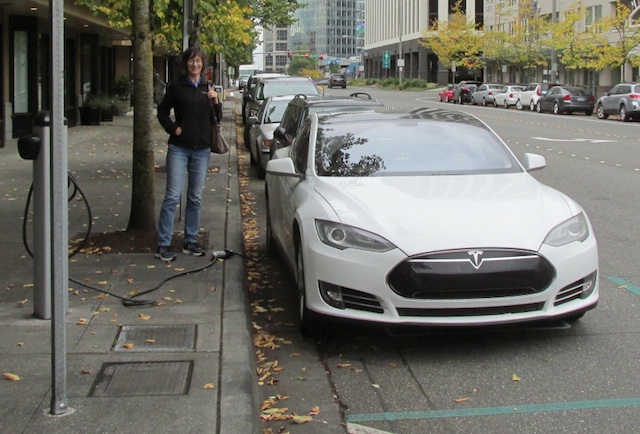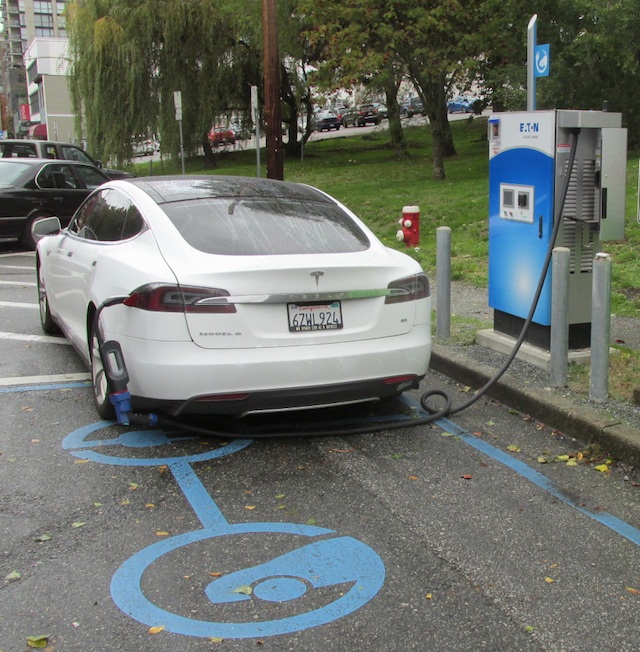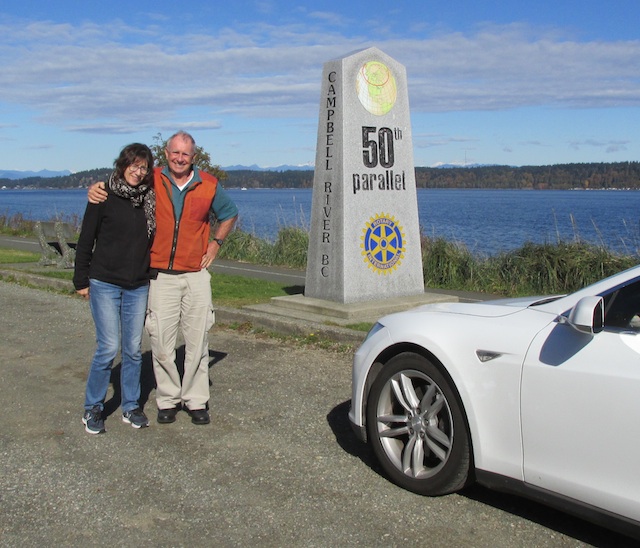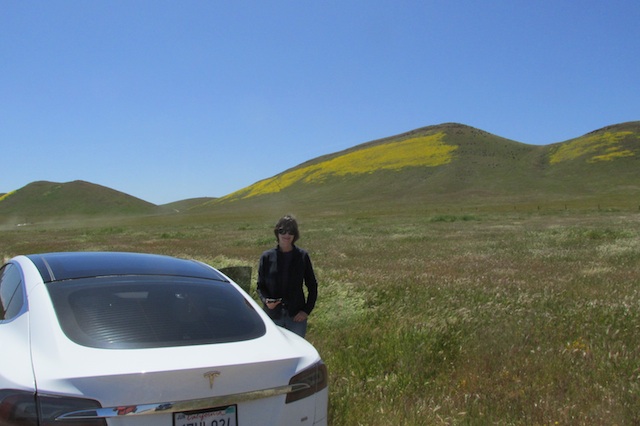Some photos from our recent trip. This first one in Bellevue WA showing the newly-purchased J1772 extension cable in use as the ChargePoint L2 EVSE cable did not reach the left rear of the Tesla in this parking spot - another plus for the i-MiEV in this scenario.

The free Greenlots DCQC EVSE in North Vancouver. First time I used my CHAdeMO adapter with the Tesla. Note the front of the car protruding into the fire hydrant restricted zone.

Snapshot at Latitude 50N by Campbell River on Vancouver Island. I have many fond memories cruising here in both my catamaran and trimaran, including the not-so-nice 1989 trimaran dismasting (while singlehanding) exactly in the area shown in this picture. Unexpected highlight of this Tesla trip was the hike to the fantastic Elk Falls Provincial Park Suspension Bridge.

Edit once 10/26/16

The free Greenlots DCQC EVSE in North Vancouver. First time I used my CHAdeMO adapter with the Tesla. Note the front of the car protruding into the fire hydrant restricted zone.

Snapshot at Latitude 50N by Campbell River on Vancouver Island. I have many fond memories cruising here in both my catamaran and trimaran, including the not-so-nice 1989 trimaran dismasting (while singlehanding) exactly in the area shown in this picture. Unexpected highlight of this Tesla trip was the hike to the fantastic Elk Falls Provincial Park Suspension Bridge.

Edit once 10/26/16

























